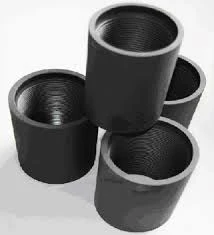- Afrikaans
- Albanian
- Amharic
- Arabic
- Armenian
- Azerbaijani
- Basque
- Belarusian
- Bengali
- Bosnian
- Bulgarian
- Catalan
- Cebuano
- Corsican
- Croatian
- Czech
- Danish
- Dutch
- English
- Esperanto
- Estonian
- Finnish
- French
- Frisian
- Galician
- Georgian
- German
- Greek
- Gujarati
- Haitian Creole
- hausa
- hawaiian
- Hebrew
- Hindi
- Miao
- Hungarian
- Icelandic
- igbo
- Indonesian
- irish
- Italian
- Japanese
- Javanese
- Kannada
- kazakh
- Khmer
- Rwandese
- Korean
- Kurdish
- Kyrgyz
- Lao
- Latin
- Latvian
- Lithuanian
- Luxembourgish
- Macedonian
- Malgashi
- Malay
- Malayalam
- Maltese
- Maori
- Marathi
- Mongolian
- Myanmar
- Nepali
- Norwegian
- Norwegian
- Occitan
- Pashto
- Persian
- Polish
- Portuguese
- Punjabi
- Romanian
- Russian
- Samoan
- Scottish Gaelic
- Serbian
- Sesotho
- Shona
- Sindhi
- Sinhala
- Slovak
- Slovenian
- Somali
- Spanish
- Sundanese
- Swahili
- Swedish
- Tagalog
- Tajik
- Tamil
- Tatar
- Telugu
- Thai
- Turkish
- Turkmen
- Ukrainian
- Urdu
- Uighur
- Uzbek
- Vietnamese
- Welsh
- Bantu
- Yiddish
- Yoruba
- Zulu
tubing crossover
Understanding Tubing Crossovers in the Oil and Gas Industry
In the dynamic world of oil and gas exploration and production, efficiency and reliability are paramount. One crucial component in the upstream sector is the tubing crossover. Tubing crossovers are specialized fittings used in drilling operations, designed to enable seamless transitions between different types of pipes or tubing. Understanding their significance and functionality can help illuminate their role in optimizing extraction processes.
A tubing crossover essentially acts as a connector between two distinct components of the drilling system. Typical scenarios involve the transition from production tubing to a smaller diameter pipe or vice versa. These fittings are vital in both conventional and unconventional drilling operations, as they ensure the integrity and efficiency of fluid and gas transportation.
The design of tubing crossovers is based on specific operational requirements. They are engineered to withstand high pressure and extreme temperatures, characteristic of oil and gas extraction sites. Materials used in the construction of these crossovers, often alloy steels and other robust materials, provide durability and resistance to corrosion, ensuring longevity and performance.
In addition to physical robustness, tubing crossovers must adhere to strict safety and quality standards, given the hazardous nature of the environment in which they operate
. Compliance with industry regulations ensures that these components can handle the rigorous demands of extraction and processing.tubing crossover

Installation and maintenance play a crucial role in the efficacy of tubing crossovers. Proper installation ensures a tight seal, preventing leaks that could lead to loss of resources and environmental hazards. Regular inspections are also essential to ascertain the integrity of the crossover, particularly in high-stress situations where wear and tear can occur. Many operators deploy advanced technologies, such as ultrasonic testing, to monitor the condition of these fittings proactively.
Furthermore, tubing crossovers significantly impact the overall efficiency of drilling operations. By facilitating smooth transitions between different pipe diameters, they help maintain optimal flow rates, reducing pressure drops within the system. This efficiency not only enhances the extraction process but also contributes to lower operational costs.
Innovations in the design of tubing crossovers continue to evolve, driven by advancements in materials technology and engineering practices. Many modern crossovers incorporate features such as automatic pressure relief valves, which enhance safety during operations. Furthermore, the emerging trend of integrating smart technologies into drilling equipment allows operators to monitor the performance of crossovers in real time, providing critical data that can lead to more informed decision-making.
In conclusion, tubing crossovers are essential components in the oil and gas industry, serving as pivotal connectors in the complex infrastructure of drilling operations. Their ability to withstand harsh conditions while maintaining efficiency is vital to ensuring the successful extraction of resources. As technology continues to advance, so too will the designs and functionalities of tubing crossovers, paving the way for more efficient and safer drilling practices in the future. The importance of these fittings is a testament to the intricate nature of modern oil and gas operations, where even the smallest components play a crucial role in overall productivity and safety.
-
Tubing Pup Joints: Essential Components for Oil and Gas OperationsNewsJul.10,2025
-
Pup Joints: Essential Components for Reliable Drilling OperationsNewsJul.10,2025
-
Pipe Couplings: Connecting Your World EfficientlyNewsJul.10,2025
-
Mastering Oilfield Operations with Quality Tubing and CasingNewsJul.10,2025
-
High-Quality Casing Couplings for Every NeedNewsJul.10,2025
-
Boost Your Drilling Efficiency with Premium Crossover Tools & Seating NipplesNewsJul.10,2025







